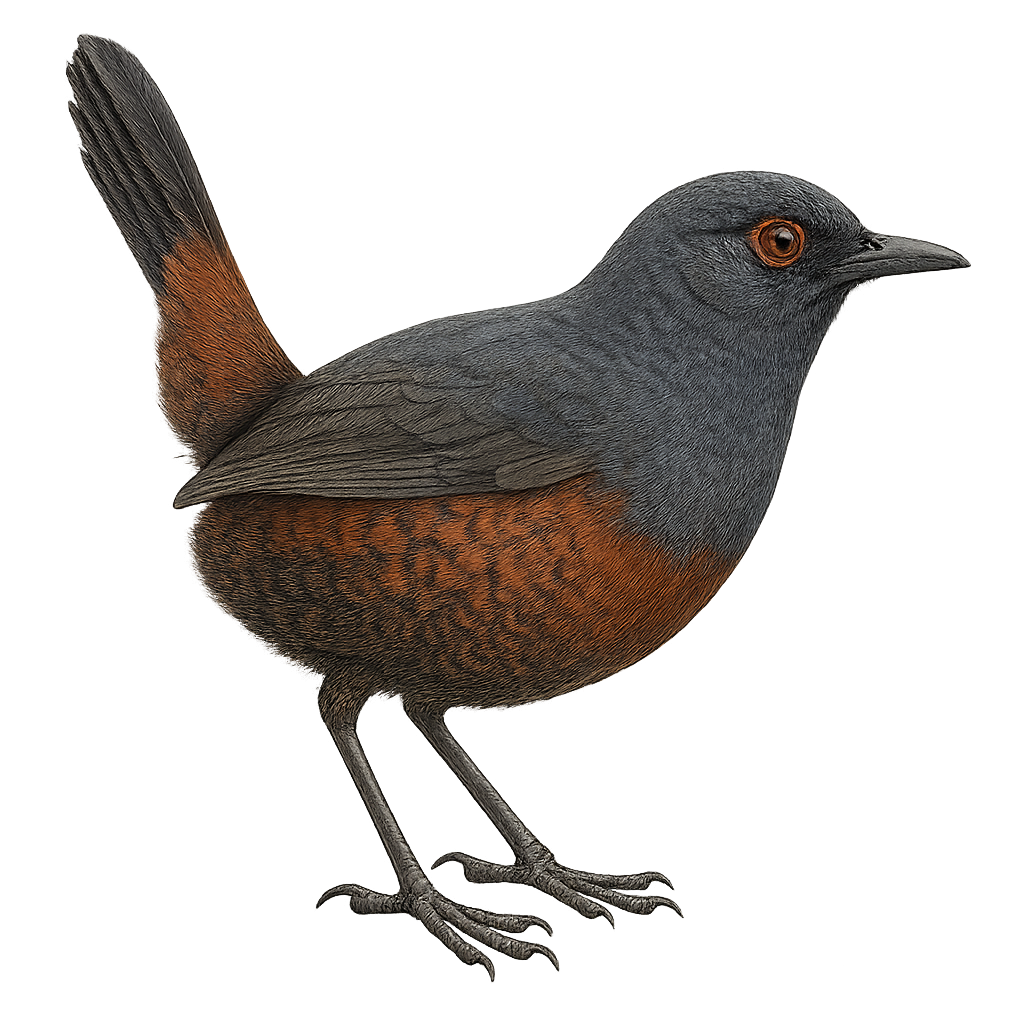Your wildlife photography guide.
Explore the chucao tapaculo in detail, study its behavior, prepare your shots.
Where to observe and photograph the chucao tapaculo in the wild
Learn where and when to spot the chucao tapaculo in the wild, how to identify the species based on distinctive features, and what natural environments it inhabits. The WildlifePhotographer app offers tailored photography tips that reflect the chucao tapaculo’s behavior, helping you capture better wildlife images. Explore the full species profile for key information including description, habitat, active periods, and approach techniques.
Chucao Tapaculo
Scientific name: Pteroptochos tarnii

IUCN Status: Least Concern
Family: RHINOCRYPTIDAE
Group: Birds
Sensitivity to human approach: Suspicious
Minimum approach distance: 5 m
Courtship display: September to October
Incubation: 21-23 jours
Hatchings: September to November
Habitat:
Temperate forests, dense undergrowth, wetlands
Activity period :
Primarily active during the day, with peak activity in the morning and late afternoon.
Identification and description:
The Chucao Tapaculo is a bird endemic to the temperate forests of southern Chile and Argentina. Easily recognizable by its reddish-brown plumage and white throat, this bird measures about 18 cm. It is often heard before being seen, thanks to its powerful and melodious song. Preferring dense and humid undergrowth, it feeds mainly on insects and other small invertebrates. Although generally discreet, it can be curious and approach motionless observers. The Chucao Tapaculo plays an important role in the ecosystem by controlling insect populations and participating in seed dispersal.
Recommended lens:
400 mm – adjust based on distance, desired framing (portrait or habitat), and approach conditions.
Photography tips:
To photograph the Chucao Tapaculo, it is advisable to use a telephoto lens of at least 400mm to capture detailed images without disturbing the bird. Look for it in the dense undergrowth of temperate forests, where it is often heard before being seen. Be patient and remain still so it approaches out of curiosity. The best times to observe it are early morning or late afternoon when its activity is highest. Use a tripod to stabilize your camera and opt for a wide aperture to capture light in shaded areas.
The WildlifePhotographer App is coming soon!
Be the first to explore the best nature spots, track rutting seasons, log your observations, and observe more wildlife.
Already 1 431 wildlife lovers subscribed worldwide

